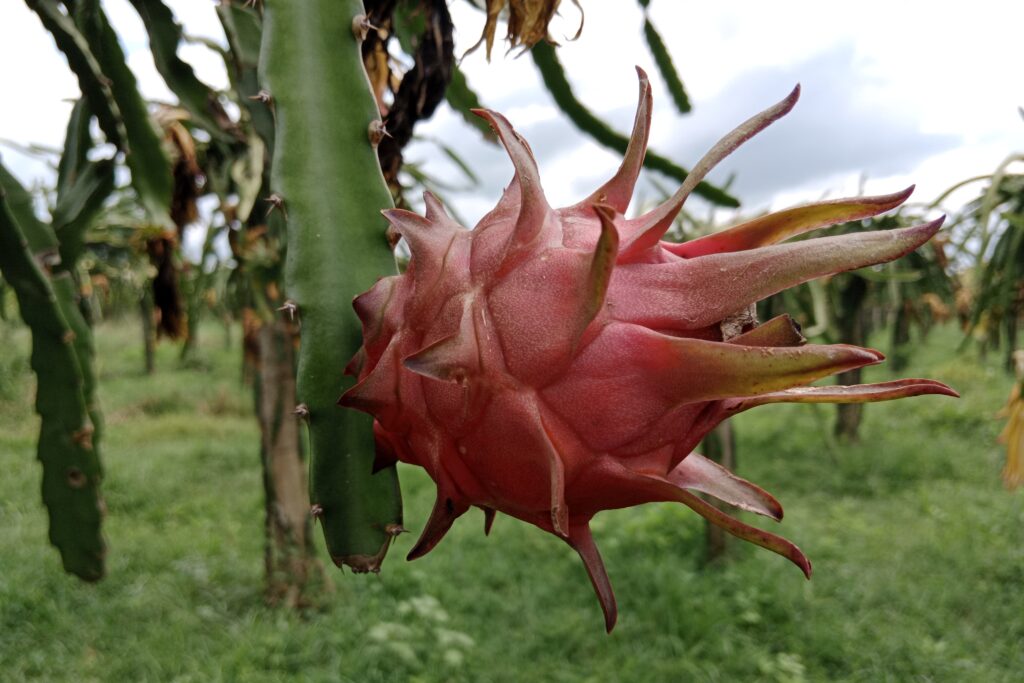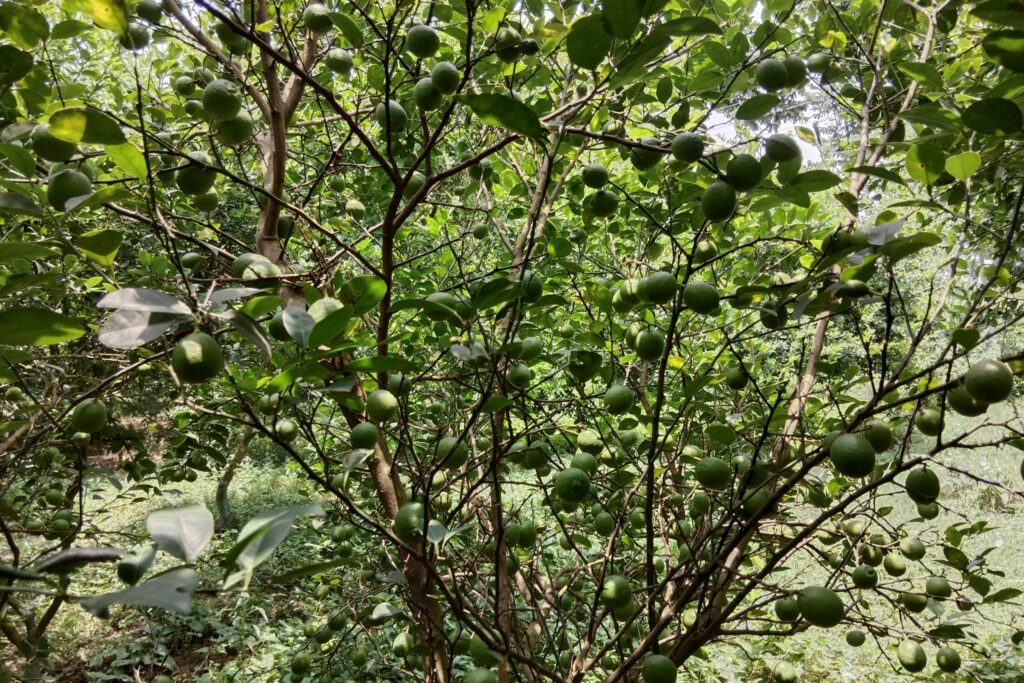Kalanchoe blossfeldiana
A popular flowering plant that has won over gardeners and plant lovers all around the world is Kalanchoe blossfeldiana, also referred to as Christmas Kalanchoë or Flaming Katy. This succulent is indigenous to Madagascar and is well-known for its vivid blooms, low maintenance requirements, and durable blooming. The natural occurrence, botanical description, production, breeding, propagation, longevity, pest and disease management, and future prospects of this extraordinary plant will all be covered in this blog post.
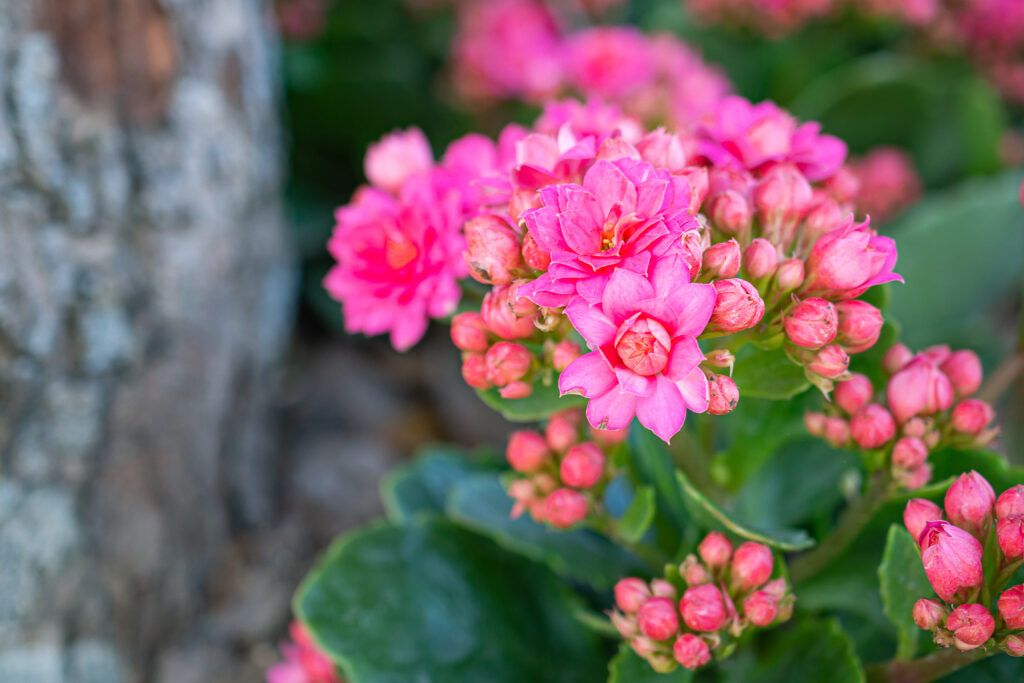
Natural Occurrence
Kalanchoë blossfeldiana is a forest plant native to Madagascar, where it thrives in various climatic conditions. The average annual temperature in its natural habitat is around 25.4°C, but at higher altitudes, such as in Antananarivo (1400 meters above sea level), the temperature drops to approximately 16.7°C. The plant was first discovered in the Tsaratanana Mountains, at altitudes ranging between 1600 and 2400 meters.
Botanical Description
In Madagascar, where it is endemic, K. blossfeldiana reaches a height of roughly 30 cm. The plant has thick, hairless leaves that measure around 4 cm in width and 7 cm in length. Eight stamens, four free carpels, and four sepals and tepals define the blooms. Although the species possesses 34 chromosomes, inter-specific hybridization has allowed for the achievement of higher ploidy levels (triploid, 2n = 51, and tetraploid, 2n = 68).
Introduction and Cultivation
Kalanchoë blossfeldiana has a rich history of cultivation that dates back to its origins in Madagascar. It was first cultivated at the botanical garden in Antananarivo, the capital city of Madagascar, where its striking beauty and resilience were recognized. In 1927, the plant was introduced to Europe as a flowering ornamental under the name K. globulifera in Paris, marking the beginning of its global journey.
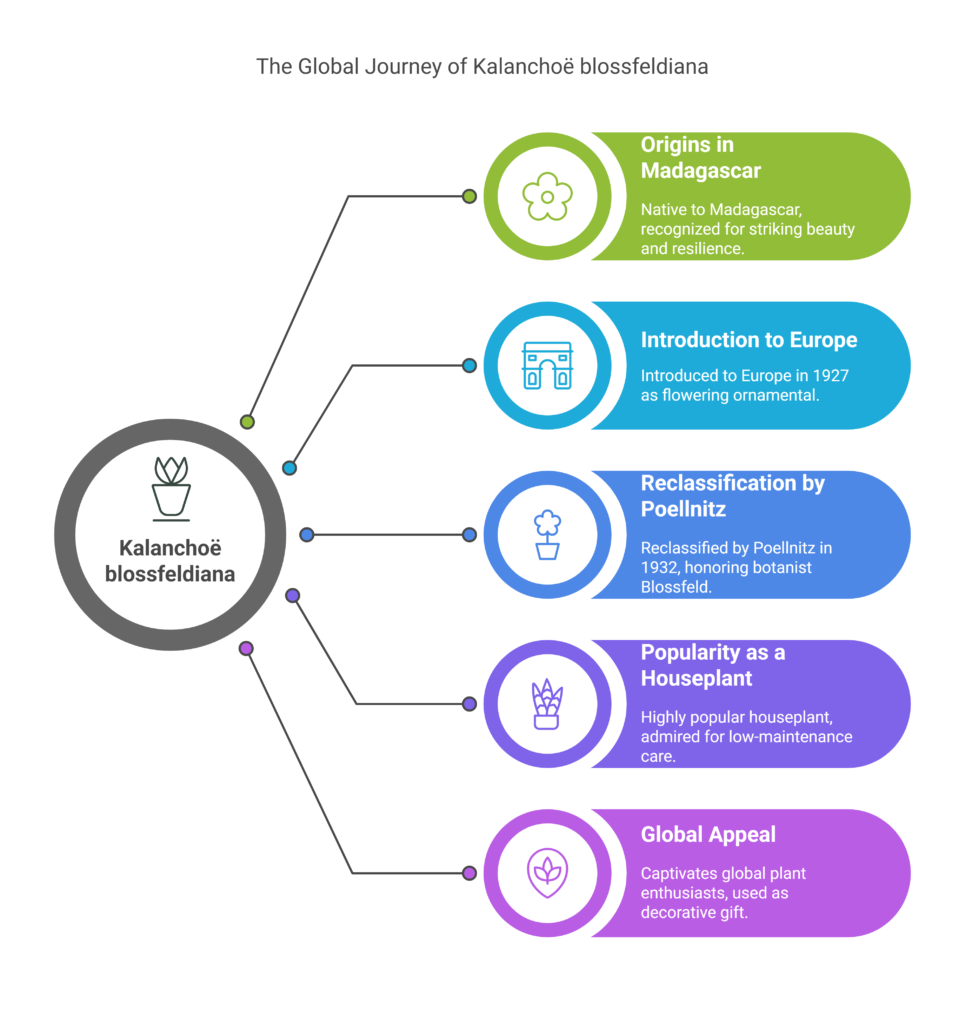
Five years later, in 1932, a German seed collector named Poellnitz reclassified the species, giving it the name K. blossfeldiana in honor of Robert Blossfeld, a renowned botanist. This renaming solidified its identity in the horticultural world.
Kalanchoë blossfeldiana is a highly popular potted plant today, prized for its vibrant, long-lasting blooms and effortless care. Its low-maintenance nature makes it an excellent choice for both beginner and experienced gardeners alike.
With its compact size, glossy leaves, and clusters of brightly colored flowers, this plant has become a favorite in homes, offices, and gardens around the world. Thanks to its charm and adaptability, K. blossfeldiana continues to captivate plant enthusiasts, whether used as a decorative houseplant or a thoughtful gift, securing its place as a beloved ornamental species.
Production and Cultivars
Kalanchoë blossfeldiana holds a significant position in the global ornamental plant market, thanks to its vibrant blooms, long-lasting flowers, and adaptability to various growing conditions. Its popularity has made it a staple in the horticulture industry, with millions of plants produced and sold worldwide each year. Europe dominates the production landscape, cultivating an impressive 150 million plants annually.
The USA and Canada follow closely, contributing 40 million plants, while South America and the Far East (including Japan, Korea, and China) each produce around 30 million plants. This widespread production highlights the plant’s universal appeal and commercial success.
At the forefront of K. blossfeldiana production is Knud Jepsen A/S, a Danish company recognized as the world’s largest producer. With state-of-the-art greenhouse facilities spanning 12,000 square meters in Århus, Denmark, the company has expanded its operations to include 30,000 square meters in Vietnam and 50,000 square meters in Turkey.
This global footprint allows Knud Jepsen A/S to produce an astounding 24 million potted plants and 35 million cuttings annually, supplying its products to 75 countries. The company’s success is a testament to the plant’s high demand and the efficiency of modern horticultural practices.
K. blossfeldiana’s market attractiveness is further increased by the variety of cultivars available. To accommodate varying consumer preferences, breeders have created a vast array of cultivars, each with distinctive flower colors, forms, and growth patterns. The plant’s flexibility guarantees its place as a favorite among gardeners and floral enthusiasts, ranging from traditional reds and pinks to vivid oranges, yellows, and whites. K. blossfeldiana’s position as a key participant in the worldwide decorative plant business is cemented by its large-scale production and cultivar diversity.
Breeding
Enhancing important characteristics such flower color, shape, growth form, leaf form, post-harvest longevity, disease resistance, and rapid vegetative propagation is the main goal of breeding efforts for Kalanchoë blossfeldiana. The necessity to satisfy changing consumer demands and increase the plant’s financial viability is what motivates these goals.
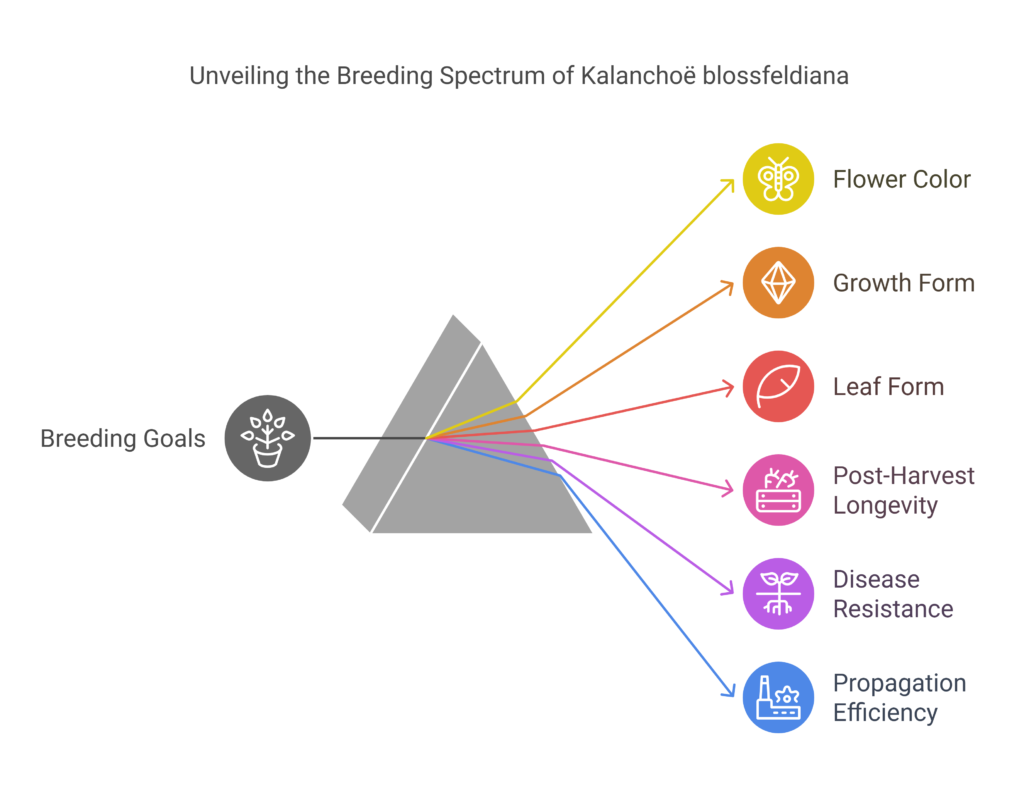
Breeders strive to make plants that are not only aesthetically pleasing but also long-lasting and minimal maintenance by creating cultivars with vivid and varied flower colors, compact growth habits, and extended post-harvest life. Enhancing disease resistance and propagation effectiveness also guarantees that the plant will continue to be a sustainable and affordable choice for producers.
K. blossfeldiana keeps evolving through conventional breeding, genetic modification, and creative methods, securing its position as a popular and commercially viable ornamental plant across the globe.
Propagation
Kalanchoë blossfeldiana can be propagated through three primary methods: generatively (from seeds), micropropagation, or vegetatively (from cuttings). Among these, vegetative propagation is the most widely used due to its efficiency and reliability. In this method, stock plants are maintained under long-day conditions, receiving 18 hours of light daily to promote continuous growth.
Cuttings are typically taken from one-year-old stock plants and rooted directly in pots at an optimal temperature of 22°C, also under long-day conditions. This approach ensures rapid and consistent production of healthy, uniform plants, making it the preferred choice for commercial growers and home gardeners alike.
Production Control
For Kalanchoë blossfeldiana to be produced successfully, environmental conditions like light, temperature, humidity, fertilizer, and CO2 levels must be carefully controlled. Since it needs 13 to 14 hours of continuous darkness every day to initiate flowering, light control is an essential part of growing this short-day plant. 20°C is the ideal temperature for growth because lower temperatures (less than 15°C) might impede growth, while higher temperatures (more than 25°C) can result in lengthened stems and pale flower hues.
Additionally, healthy growth and superior flowers are guaranteed by keeping regulated humidity, appropriate fertilization, and sufficient CO2 levels. Through meticulous control of these factors, cultivators can optimize the plant’s aesthetic appeal and economic worth.
CAM Photosynthesis
Kalanchoë blossfeldiana utilizes a unique photosynthetic process known as Crassulacean Acid Metabolism (CAM), which is particularly well-suited for arid and drought-prone environments. Unlike most plants, which open their stomata during the day to take in carbon dioxide, CAM plants like K. blossfeldiana open their stomata at night to absorb CO2 and store it as malic acid. During the day, when the stomata are closed to minimize water loss, the stored CO2 is released and used for photosynthesis.
This adaptation allows the plant to conserve water while efficiently optimizing carbon acquisition, making it highly resilient in dry or challenging conditions. CAM photosynthesis not only enhances the plant’s ability to thrive in low-water environments but also contributes to its overall hardiness and popularity as a low-maintenance ornamental species.
Growth Retardation
To achieve compact growth and desirable plant shapes in Kalanchoë blossfeldiana, growers frequently rely on chemical growth retardants such as Topflor, Alar, Bonzi, and B-Nine. These treatments are strategically applied at specific stages of production to regulate plant size and prevent excessive elongation of inflorescence stems, ensuring a more aesthetically pleasing form.
However, the use of growth retardants comes with several challenges, including potential toxicity to human health and the environment, high costs associated with the chemicals and their application, and the need for precise, cultivar-specific treatment protocols. Despite these drawbacks, growth retardants remain a common tool in commercial production to meet market demands for uniform, well-shaped plants.
Ethanol Treatment
An innovative and eco-friendly alternative to chemical growth retardants for Kalanchoë blossfeldiana is ethanol treatment, which has proven effective in promoting compact growth. By watering the plants weekly with ethanol solutions ranging from 0.5% to 4%, growers can achieve desirable plant shapes without relying on potentially harmful chemicals.
This method is not only more effective than spray treatments but also simpler to integrate into commercial production systems, particularly those using ebb-and-flood watering techniques. Ethanol treatment offers a cost-effective and sustainable solution for controlling plant size, making it an attractive option for both large-scale growers and environmentally conscious gardeners.
Pest and Disease Management
Kalanchoë blossfeldiana is vulnerable to a range of pests and diseases, including viruses like Yellow Spotted Virus and Kalanchoe Latent Virus, fungal infections such as Crown rot and Botrytis cinerea, and insect pests like whiteflies and thrips.
To effectively manage these challenges, growers must adopt a proactive approach that includes regular monitoring to detect early signs of infestation, maintaining proper sanitation to prevent the spread of pathogens, and utilizing disease-resistant cultivars whenever possible. By implementing these strategies, growers can minimize damage, ensure healthier plants, and maintain the high quality and ornamental value of K. blossfeldiana.
Longevity and Post-Harvest Quality
Depending on the cultivar, Kalanchoë blossfeldiana has a wide range of post-harvest longevity; under ideal circumstances, some cultivars can keep their vivid blooms for up to 60 days. But the plant is extremely vulnerable to ethylene, a natural gas that hastens the aging and senescence of flowers.

The plant’s shelf life and visual appeal can be significantly shortened by ethylene exposure, which can happen during transit, in retail settings like supermarkets, or even from sources like cigarette smoke. Treatments with ethylene inhibitors, such as hexylcyclopropene (1-HCP) or EthylBloc, are quite successful in addressing this problem.
By preventing the action of ethylene, these treatments help to maintain the plant’s freshness and prolong its post-harvest life, guaranteeing that it will continue to be a stunning and durable addition to gardens and homes.
Future Visions
The future of K. blossfeldiana breeding lies in developing new flower colors, plant forms, disease resistance, and improved post-harvest quality, particularly ethylene resistance. Traditional breeding, negative selection, and genetic modification are the primary methods being explored to achieve these goals.
Conclusion
Kalanchoë x blossfeldiana Poelln. is a versatile and resilient plant that has become a staple in the ornamental plant industry. Its vibrant blooms, ease of care, and adaptability make it a favorite among growers and consumers alike. As breeding and production techniques continue to advance, we can expect to see even more stunning varieties of this remarkable plant in the future. Whether you’re a seasoned gardener or a novice plant enthusiast, K. blossfeldiana is a delightful addition to any home or garden.
References
Serek, M. and M.S. Reid, 2000. Ethylene and postharvest performance of potted kalanchoë. Postharvest Biology and Technology 18:43-48.
Kebenei, Z., E.C. Sisler, T. Winkelmann and M. Serek, 2003. Effect of 1- ctylcyclopropene and 1-methylcyclopropene on vase life of sweet pea (Lathyrus odoratus L.) flowers. Journal of Horticultural Science and Biotechnology 78(4): 433-436.
Lee, M.Y, N.H. Chi and B.R. Jeong, 2003. Growth and flowering of Kalanchoë Rakoas affected by concentration of Paclobutrazol and Uniconazole. Acta Horticulture 624: 287-296.
Sanikhani, M., S. Frello and M. Serek, 2006. TDZ induces shoot regeneration in various Kalanchoë blossfeldiana Poelln. cultivars in the absence of auxin. Plant Cell, Tissue and Organ Culture 85: 75-82
Sanikhani, M., H. Mibus, B.M. Stummann and M. Serek, 2008. Kalanchoë blossfeldiana plants expressing the Arabidopsis etr1-1 allele show reduced ethylene sensitivity. Plant Cell Reports 27: 729-737.

